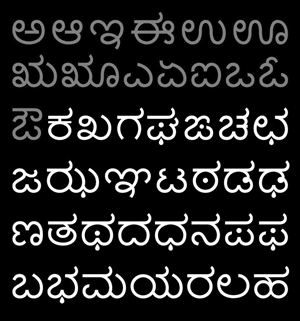Over the last two years there have been a lot of changes in my life on every level: work, love and even which country I call my home. I started a new company, got married and then moved to Mysore, precisely in that order. How is this all connected you may be wondering? Well, I’ve had to start learning not just one but two new languages. I’ve also found some interesting parallels with my own daily Ashtanga practice.
Learning Swedish
 My motivation to learn Swedish came from meeting Leia who recently upgraded to become Mrs Andefors. Within a week of meeting her I had downloaded an app that taught me one Swedish word a day. I soon learnt very useful words like ‘säkerhetsbälte’ (safety belt) and ‘arbetsskada’ (work place injury).
My motivation to learn Swedish came from meeting Leia who recently upgraded to become Mrs Andefors. Within a week of meeting her I had downloaded an app that taught me one Swedish word a day. I soon learnt very useful words like ‘säkerhetsbälte’ (safety belt) and ‘arbetsskada’ (work place injury).
I was not deterred by Leia’s roars of laughter when I tried these new words out on her by casually dropping them into conversation. I can’t think how I would have managed to drop ‘arbetsskada’ casually into any conversation, but it must have been pretty funny. About a month later I downloaded Rosetta Stone and began learning Swedish seriously.
Rosetta Stone, for those who don’t know, is a brilliant software programme for Mac and PC designed to help you learn one of 30 languages. Learning a language is multi-faceted and you need to cover core areas such as vocabulary, comprehension, grammar, writing and speaking. Rosetta Stone covers all these bases nicely. It’s very repetitive and can therefore get pretty boring the twentieth time you spell out ‘the boy is drinking juice’ but it does have a working method and you notice that all of a sudden that phrase allows you to build other sentences later on. So, like the Ashtanga practice, it’s highly structured and progressive.
Learning Kannada
 When arriving in Mysore for the first time I quickly realised that most locals in Gokulam speak pretty good English, but as soon as you travel further afield this is not the case. I quickly started picking up phrases in the local language Kannada. ‘Thank you’ was the very first expression I learned, followed by ‘How are you?’, ‘I’m well’ and the very important and frequently asked ‘Have you had lunch?’ The way I learned Kannada was in stark contrast to the structured way I learned Swedish; it was through waiters, shopkeepers and neighbours.
When arriving in Mysore for the first time I quickly realised that most locals in Gokulam speak pretty good English, but as soon as you travel further afield this is not the case. I quickly started picking up phrases in the local language Kannada. ‘Thank you’ was the very first expression I learned, followed by ‘How are you?’, ‘I’m well’ and the very important and frequently asked ‘Have you had lunch?’ The way I learned Kannada was in stark contrast to the structured way I learned Swedish; it was through waiters, shopkeepers and neighbours.
Whether I was in Sweden or Mysore, it was very clear how much people appreciate it when you make an effort to speak their language. In Sweden I sometimes play a game I like to call ‘Pretend to be a Swede’. I go into a coffee shop, order a coffee in Swedish and see if the staff answer me back in their native tongue – and mostly they do! It gets a bit more complicated when they start asking about what food I would like or making conversation but I quickly learned how to say ‘card’ or ‘cash’ when asked how I wanted to pay. The game ‘Pretend to be an Indian’ doesn’t quite work for obvious reasons, but the happiness that shines in people’s eyes when I say a few words in the local tongue is even more obvious in Mysore than in Sweden. Stern guards and tired shopkeepers beam brightly or laugh and repeat what I just said with warmth or offer a new phrase for me to learn.
Language vs Yoga
Here are some interesting parallels I’ve observed between learning a new language and practising yoga:
- You are going to look silly: not always, but especially in the beginning or when learning a new or tricky posture or phrase. You will say something so wrong that people will laugh out loud! You might fall on your arse, face or arms – literally when it comes to the practice – quite a few times before you get it. You’re going to have to learn to be ok with this. You have to surrender to the fact that you’re still learning even if you’re not a beginner. You don’t know it all and you’re going to have to be humble. Learning a language and practising Ashtanga can both teach you humility (with the right attitude of course).
- Once you think you know it, something shows you that you don’t: you thought you nailed that grammar or that posture and then one day your muscles tell you something else, or you hear a new way of saying what you thought was the only way to form a sentence and you go back to point one and accept that we’re all beginners, even after years and years of practice.
- Keep at it: regardless if you’re learning from a book, a DVD, in a classroom or on the street, it’s important to keep it up otherwise it starts slipping away. Learning a few phrases is easy but to actually be able to build sentences you have to go deeper. It’s the same with yoga: we can all pretty quickly learn how to throw a few shapes around the room but if you want a deeper and more flowing practice, you have to practice, practice, practice.
- Do it with someone who is better than you: when I say better I mean someone more experienced. When it comes to language, a native speaker is always preferred – practice with them to get the right pronunciation and grammar. You can also surround yourself with native speakers and pick up a word here or there from what they’re saying, although this is harder. When it comes to yoga the same principle applies and it’s also a good idea to practice with someone who is more experienced than you and knows how to instruct in a way that resonates with you. Just like with the language, you can observe people who have gotten further than you and how they do things for inspiration and help, but beware you can also pick up on people’s bad habits!
- Overcoming boredom: getting good means you’re inevitably going to get bored, because by the time you’ve done enough repetition to become accomplished you would have done the same thing over and over again many times. Guruji used to say you had to do a posture 1,000 times to master an asana. I believe that the deep learning happens beyond boredom. Well that’s what I tell myself to keep going anyway!
A year in Mysore
 As Leia and I are staying in Mysore for a year we’ve decided to start weekly Kannada lessons with a tutor so we can take our conversations with the locals to the next level. The Swedish lessons have taken a back seat, apart from a few sentences here and there with Leia, but we’re talking about moving to the northern hemisphere at some point and by then I will have plenty of time to practice.
As Leia and I are staying in Mysore for a year we’ve decided to start weekly Kannada lessons with a tutor so we can take our conversations with the locals to the next level. The Swedish lessons have taken a back seat, apart from a few sentences here and there with Leia, but we’re talking about moving to the northern hemisphere at some point and by then I will have plenty of time to practice.
When it comes to my yoga practice I’m making the most of being based in the heart of the Ashtanga world. I completed 3 months with Sharath at the end of 2014 and am exploring other teachers and places to practice in Mysore. Every day is an adventure here, even the days that are repetitive and a little bit boring, because at the end of the day life is all about practice, practice, practice.
– Guy Andefors
Did you enjoy this blog post?
Sign up for our monthly newsletter in the right hand column at the top of this page, and receive great content like this direct to your inbox. Don’t worry, we won’t bombard you with anything else – just interesting, relevant, inspiring articles from fellow Ashtangis around the world.

No comments yet.